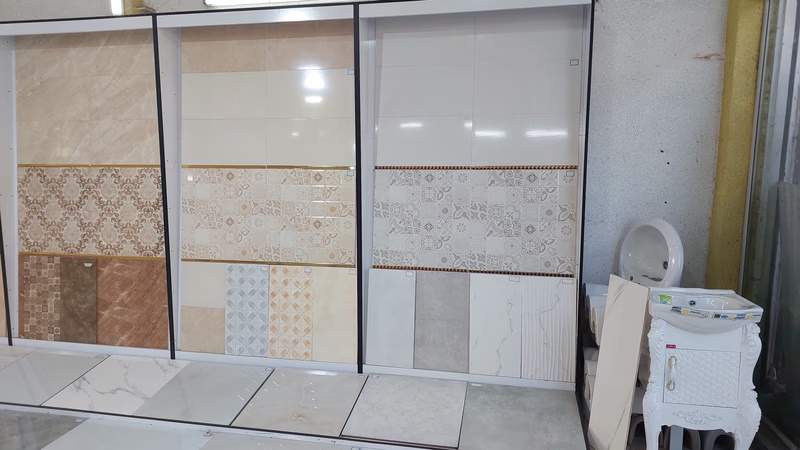
Ceramic tile varieties enhance aesthetics and durability.
Ceramic tile refers to a type of tile made from clay or other inorganic materials that are fired at high temperatures. It is a popular choice for flooring, walls, and other surfaces in both residential and commercial settings. Ceramic tiles are known for their durability, versatility, and aesthetic appeal. The manufacturing process involves shaping the clay into desired tile forms and then firing them in a kiln at temperatures ranging from 1,000 to 2,500 degrees Fahrenheit (537 to 1,371 degrees Celsius). This process causes the clay to harden, resulting in a strong and durable ceramic tile.
Ceramic tiles are relatively easy to maintain, and they are resistant to water, stains, and scratches. They are also known for their thermal efficiency, making them suitable for use with underfloor heating systems. With proper installation and care, ceramic tiles can last for many years, making them a popular choice for both functional and decorative purposes in homes, offices, and other spaces. The word tile is derived from the Latin word (Tegula), which is a synonym of French TUILE, which means baked flower on the roof, and the English word TILE also means covering on the building.
Ceramic is a name that is used for all inorganic and non-metallic solids. Materials that are obtained from the combination of clay and feldspar (a type of crystalline mineral composed of aluminum, sodium, potassium, and calcium silicates and found in igneous rocks) are obtained at high heat and become cohesive by a glass-like mass. They are called ceramics. Ceramics are very hard and non-solvent and impermeable. Ceramic tiles are very important products in the construction industry that are used as coverings on walls or floor space. In addition to the decorative aspect, these products help to maintain the health of the environment and prevent the penetration of moisture. There are various types of ceramic tiles.
When the word tile comes to the ears of most people, the word ceramic tile is immediately associated in their mind. Of course, it is not surprising because ceramic tile is undoubtedly the most common coating used in architecture and decorating residential and commercial places. The use of ceramic tiles from 4000 BC in Egypt The use of spaceships in the present era has a long history. Ceramic tile has a key role in the architecture of residential places due to creating a beautiful appearance and as a common covering. Ceramic tiles are a kind of materials that are generally made of sand, clay and minerals. The overall shape of the tiles may vary. You can find round, square, oval and rectangular tiles in the building materials market. In fact, there are different molds for baking tiles in the oven.
Ceramic tiles come in various sizes, shapes, colors, and patterns, offering a wide range of design options for different applications. They can be glazed or unglazed. Glazed ceramic tiles have a protective layer of liquid glass applied to the surface, which gives them a glossy appearance and makes them more resistant to stains and moisture. Unglazed ceramic tiles, on the other hand, have a natural, matte finish and are often used in areas where slip resistance is important, such as bathrooms and kitchens.
-
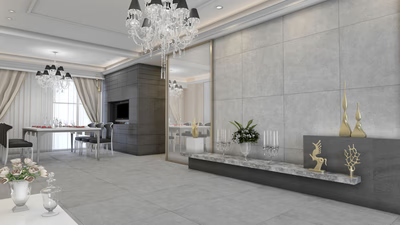
The price and quality of ceramic tiles are influenced by the materials used and the manufacturing processes. Higher-quality tiles, made from premium clay and advanced techniques, tend to be more durable and visually appealing. Thicker tiles are generally more robust, while thinner options may be more affordable but less durable. The surface finish, ranging from matte to glossy, also affects pricing; high-quality finishes ensure longevity and resistance to stains. Intricate designs and unique colors can increase costs due to specialized production methods. While aesthetic appeal is important, buyers should prioritize quality over price to avoid wasting money on inferior products. Ceramic tiles are a cost-effective flooring option for kitchens due to their durability and low maintenance costs compared to alternatives like vinyl or wood. For construction manufacturers or suppliers, purchasing directly from factories can lead to cost savings and a wider selection of products.
By eliminating middlemen, buyers can access better prices for ceramic tiles. Established brands often command higher prices due to their reputation for quality, but newer brands may offer competitive options without compromising on standards. Overall, understanding the factors that influence tile pricing can help consumers make informed decisions.
-

Ceramic tiles are made from clay and inorganic materials, fired at high temperatures, making them durable and versatile for various applications. They are commonly used in residential and commercial settings for flooring and wall coverings due to their aesthetic appeal and ease of maintenance. The manufacturing process involves shaping clay into tiles and firing them in kilns, resulting in a strong product that is resistant to water, stains, and scratches. Ceramic tiles can last many years with proper care, making them a popular choice for both functional and decorative purposes. They come in various shapes, sizes, colors, and patterns, offering extensive design options. Glazed ceramic tiles feature a protective glass layer for added durability, while unglazed tiles provide slip resistance suitable for wet areas. The historical significance of ceramic tiles dates back to 4000 BC in Egypt, highlighting their long-standing role in architecture. Their importance extends beyond aesthetics; they also contribute to environmental health by preventing moisture penetration.
-

Ceramic tiles are versatile materials widely used in both residential and commercial settings due to their durability, moisture resistance, and aesthetic appeal. They are ideal for high-traffic areas like kitchens, bathrooms, and entryways. In addition to flooring, ceramic tiles serve as wall coverings, countertops, and decorative elements in various spaces. Their chemical resistance makes them suitable for industrial applications as well. The lightweight nature of ceramic slabs reduces the structural load on buildings while allowing for diverse design options. Digital printing technologies enable the creation of unique patterns and textures, enhancing their visual appeal. Hygienic properties further contribute to their popularity over other materials like stone or cement. With a vast array of colors and designs available, ceramic tiles can be tailored to meet individual preferences in both traditional and modern architecture.
They are also used outdoors in patios and pool areas due to their weather-resistant qualities. Overall, ceramic tiles offer a combination of functionality and style that makes them a preferred choice in construction projects across the Middle East.
-
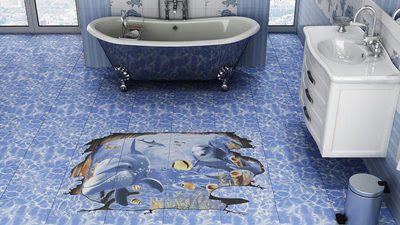
Ceramic tile production involves several key processes, starting with the selection and processing of raw materials such as clay, feldspar, and quartz. These materials are blended in precise proportions to create a homogeneous mixture. The forming process can be achieved through dry pressing or extrusion, shaping the tiles into their desired forms. After forming, tiles undergo drying to eliminate moisture, followed by glazing to enhance appearance and functionality. Glazing is applied using various methods and provides a protective finish. The critical firing process transforms the raw ceramic into a durable structure at high temperatures ranging from 1,000 to 2,500 degrees Fahrenheit. This step is essential for achieving the desired strength and color of the tiles. Post-firing, tiles are inspected for quality control, ensuring dimensional accuracy and surface integrity.
Any defective pieces are discarded before the final cutting and edge treatment processes are performed to prepare them for installation. Finally, tiles are packaged securely for transportation. The production of ceramic tiles is influenced by technological advancements that improve efficiency and quality.
-
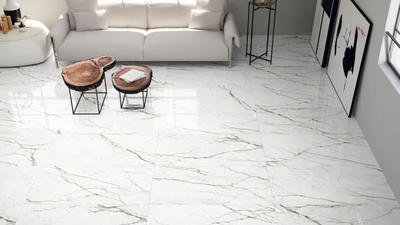
Ceramic tiles have a rich history dating back to ancient Mesopotamia around 4,000 BCE, where they were used for decorative purposes. Ancient Egyptians also utilized tiles adorned with colorful designs in tombs and palaces. The Greeks and Romans advanced tile art, using them for mosaics and in public buildings. The Islamic Golden Age saw the emergence of intricate geometric patterns and Arabic calligraphy in tile designs, particularly the blue and white "azulejos. " The Renaissance period revived ceramic tile production in Europe with new techniques like maiolica. In the Middle East, the tile industry transitioned from manual production to modern factories by the mid-1930s, significantly boosting exports. Iran"s ceramic industry ranks sixth globally, contributing to its economy through foreign currency earnings. The Industrial Revolution further mechanized tile production, making it more accessible.
Today, advancements in technology allow for diverse designs and finishes in ceramic tiles. "
-
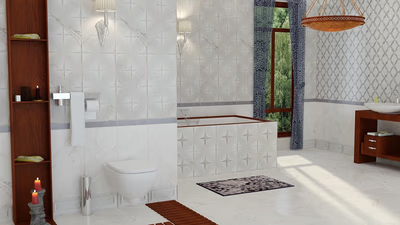
Ceramic tiles offer numerous advantages, making them a popular choice for flooring and wall coverings. Their durability allows them to withstand heavy foot traffic and resist scratches, ensuring longevity when properly maintained. They are water-resistant, making them ideal for moisture-prone areas like kitchens and bathrooms, while their non-porous surface prevents mold and mildew growth. Easy maintenance is another key benefit; regular cleaning requires minimal effort. The variety of sizes, shapes, colors, and patterns available allows for versatile design options that can suit any aesthetic preference. Additionally, ceramic tiles are hygienic as they do not harbor allergens or bacteria, making them suitable for individuals with allergies or respiratory issues. They are free from harmful substances such as VOCs, formaldehyde, and PVC, contributing to a healthier indoor environment. Their excellent heat resistance makes them safe around high-temperature areas without emitting toxic fumes.
Furthermore, ceramic tiles can enhance energy efficiency due to their thermal conductivity properties. Overall, the combination of durability, low maintenance needs, aesthetic versatility, and health benefits positions ceramic tiles as an excellent flooring option in various settings.






